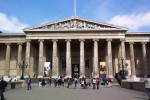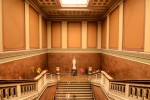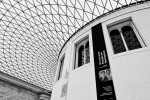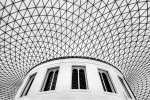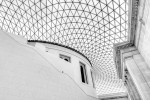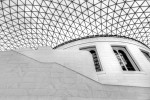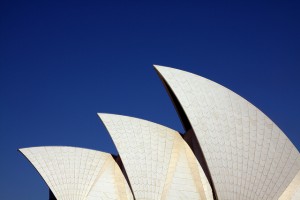
Architecture, like art, is s reflection of current culture and the sensibilities of every generation. The new architecture reflects the hopes and dreams of today, and older buildings are appreciated for the nostalgia the they evoke. As a photographer, the new and old buildings provide rich photographic opportunities Architectural photography is about capturing a sense of place and space as well as the spirit of the time and the spirit of the building.
Even if architectural photography isn’t your primary interest in photography, an understanding of it’s principals will help develop your eye to the way line, mass, and space work together to define a presence.
If you new to photographing architecture, pick a building that catches your eye and study how the changing lighting conditions throughout the day chasing the character of the building. Pay attention to the structural details, shadow play, patterns, and reflections, as they interact with the building’s other subsections.
Nearly all buildings are built for people to use. And the people add to the character of the building. In terms of composition, people provide a sender of scale. They also add the feelings of life, energy, and motion to your image.
Interior photography, commercial and private, is within the scope of architectural photography as well. Light plays a central role for interior photographs just as it does for your exterior images. If you were to browser the pages of “Architectural Digest”, or a similar magazine, it becomes clear how important lighting is to the photograph. You may not have studio lights, but you can capture great images using your flash of camera or multiple wireless strobes. Wonderful interior photographs can be made by carefully using ordinary room lights.
Inspiration for Architectural Photography
Find old and new buildings that were built for the same purpose like libraries or courthouses and create a photo essay illustrating how the use has changed over time. While photographing, pay attention to how the building interacts with surrounding buildings. Maybe you can find a juxtaposition for comparison and contrast between old and new.
When your thinking about buildings and interiors, try to verbalize what makes the space unique. Once you’re talking about a structure and it’s surroundings you can translate what you’re saying into your images.
Try photographing your own home or office with a wide angle lens for interior practice. Find meaningful and distinctive features that would help a stranger get a sense of the place.
Create a series of picture using interior design elements that echo the exterior design to show a sense of place and space as is done here with British Museum.
Wide Angle Distortion
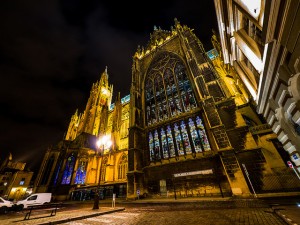
Telephoto and wide angle lenses are use in architectural photography. Using a wide angle lens at close range, especially when the camera is tilted up, vertical lines will converge toward the top of the frame. This distortion can be corrected with your photo editing software. This distortion can be avoided all together by using a tilt-shift lens, which adjusts the optical axis.
You would use the tilt-shift lens by setting your camera up on a tripod so the focal plane is parallel to walls of the building. Then adjust the shift and tilt controls of the lens to correct distortion.
Unless you intend to do a lot of architectural work it is more cost effective to use your editing program.
Tips for Architectural Photography
- Emphasize color. If your building features strong vivid colors, emphasize those colors by taking the photograph in the bright midday sun.
- Use surrounding features and elements to define a sense of place and space. For example, a building with arching lines might be framed with an archway in the foreground. Or, try using a landscape feature like local fauna for foreground elements of for framing.
- Use your cameras automatic depth of field mode (A-DEP on Canon cameras). This mode optimized the depth of field for you image by analyzing the information from all the focus areas in your viewfinder.
- Manage interior lighting. Uneven lighting and the extremes between highlighted and shaded areas is a challenge for interior photography. If the exposure value between light and shadow is outside the dynamic range of your camera, usually just four f-stops, use a tripod and make a bracketed exposure. Then you can make a composite image with your photo editing software.
Photography Credits
“Opera House” by Dave Z
“Cathedral of Metz” by Ludovic Lubeigt
“British Museum Entrance” by Juan de Dios Santander Vela
“Inside British Museum” by Adib Wahab
“British museum detail” by Adib Wahab
“British museum line” by Adib Wahab
“British museum ceiling” by Adib Wahab
“British museum Pompeii” by Adib Wahab
“British museum panorama” by Adib Wahab
“British museum vertarama” by Adib Wahab
